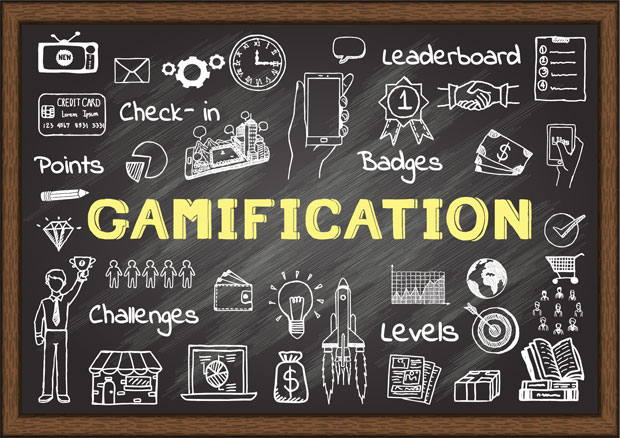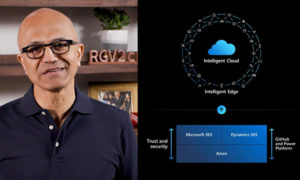Advances in technology — including speech analytics, metrics, a wider array of scrabble data, and perhaps even big data — are making gamification a must-have tool in customer relationship management, call centers, collections, sales and other business areas.
Technological advances have enabled the design of games that offer employees incentives to make customers happy.
For example, ConnectLeader in July unveiled its TopRung sales gamification and performance management tool, which works with Salesforce.
CRMGamified released Motivation Engine 3.0 in 2015, a version of its gamification platform tailored for Microsoft Dynamics CRM.
Microsoft itself purchased gamification platform FantasySalesTeam in 2015, and has a website dedicated to gamification help and training.
“Gamification capabilities have now been built into — or can be integrated easily into — most CRM applications,” said Rebecca Wettemann, VP of research at Nucleus Research.
“Effectively, gamification is applying technology to what sales and call center managers have been doing for decades — trying to incentivize certain behaviors,” she told CRM Buyer. “CRM, and call centers in particular, was an early area for leaderboards and gamification.”
Why Gamification?
Gamification appears to be a solution to one of the biggest hurdles in CRM implementation — persuading people to use the system.
Many sales professionals see administrative work as a time waster. One increasingly popular way to attract their interest is by making the updating and use of a CRM package more like a game. Good behaviors (entering data) are rewarded, and friendly competition between departments and individuals is encouraged.
“A gamification solution is the facilitator of increasing employee engagement,” observed Brett Brosseau, CEO of FidoTrack, which has implemented high-yield gamification solutions for call centers in various industries with CallMiner.
Impact of Gamified CRMs
Microsoft published two case studies on the effect of gamification with its acquisition of FantasySalesTeam.
One was a pilot project by Service Corporation International with 130 sales reps using FantasySalesTeam. The reps closed 88 percent more deals, on average, at 213 percent of the average contract value when compared to about 700 others.
The other was Wireless Zone, which saw a 176 percent increase in total sales, 35 percent more specific product sales, and a 9 percent increase in profits in the first month it ran FantasySalesTeam.
Organizations best suited for gamification “would be environments capturing key activity or data points across employees and teams,” FidoTrack’s Brosseau told CRM Buyer.
Another critical characteristic is to have those data points readily available to share among third-party vendors and the gamification platforms.
“Better data capture through automation and more real-time analytics and metrics — dashboards — have made it easier to operationalize data-based gamification,” Nucleus’ Wettemann noted.
The Art of Gamification
The three parts to gamifying a process, according to Brosseau, are on-boarding, implementation and ongoing management.
The process isn’t difficult, but “there can be a few challenges within each area of the gamifying experience,” he remarked.
Successful gamification requires the following:
- a clear goal of what the company wants to achieve;
- total organizational commitment;
- focus; and
- a gamification solution that can integrate with its key analytics vendor.
Training is key, Nucleus’ Wettemann said.
“Real advances are in areas where training and coaching are aligned with gamification and monitoring,” she explained, “so it’s not just pushing for desired behaviors but enabling them.”
It’s the Culture, Not the Technology
Among the major factors that hamper the gamification process, Brosseau said, are these:
- unclear goals;
- the inability to reliably and consistently share data with the gamification platform;
- improper ROI evaluation; and
- lack of focus.
The major reason these challenges crop up is that the implementation and utilization of a gamification platform requires a cultural shift, Brosseau pointed out.
“It’s critical for organizational decision makers and key influencers to both be committed,” he said. “In addition, it’s a management mentality shift. No longer are employees exclusively motivated by money like in the past.”
Prepare to Lather, Rinse and Repeat
“To gamify a process you must understand all possible outputs, not just the ones that are most desirable,” noted Denis Pombriant, principal at Beagle Research.
“It takes more than one iteration to get things right,” he told CRM Buyer.
Companies must ensure there are ways “for people to gracefully exit and re-enter later,” Pombriant noted. “Game creators have this down, and they’re worth listening to.”
Words of Caution
Technology isn’t everything, though.
“You make better customers by engaging them and by providing better end-to-end experiences, not by applying gizmos designed to speed up the process,” said Pombriant. “IT’s already moving at warp speed.”
There’s also concern over ways the gamification process may be abused.
Ultimately, “when good managers put incentives and measures in place to drive performance, they get desired outcomes from good employees,” Nucleus’ Wettemann said. “When bad managers put gamification in place instead of real leadership, they get just what you’d expect.”


























































Social CRM
See all Social CRM